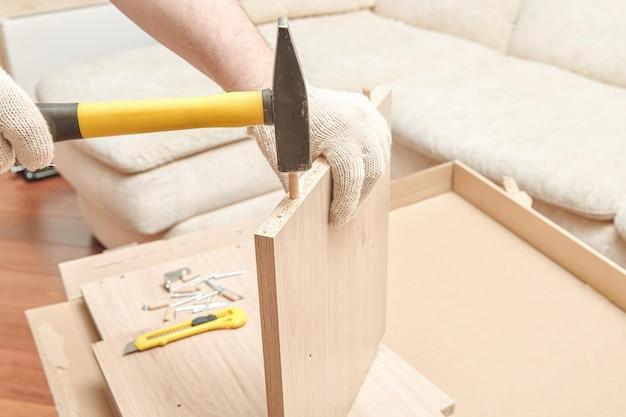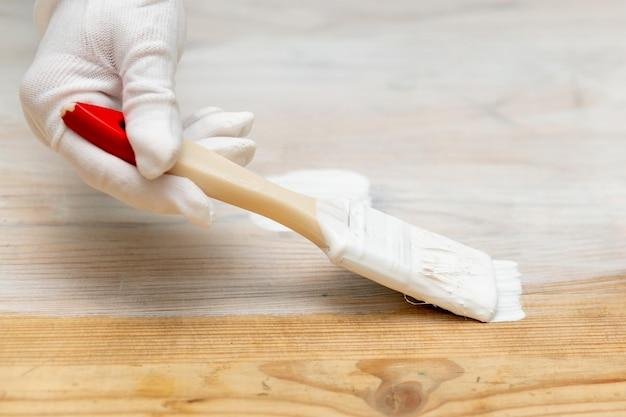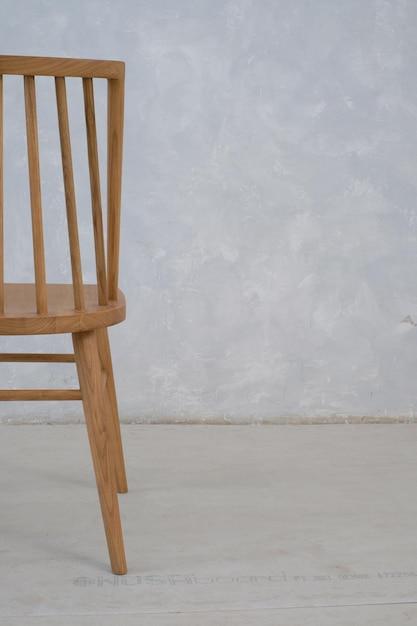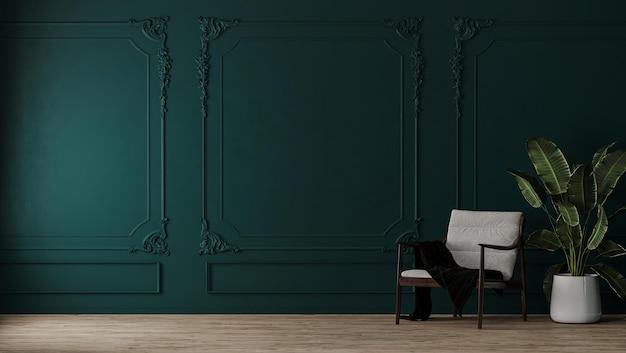If you’ve recently painted your floor, you may be wondering how long you should wait before putting your furniture back in place. After all, you don’t want to accidentally ruin your beautiful new paint job. In this blog post, we’ll explore the recommended drying times for floor paint, as well as provide answers to commonly asked questions such as when you can put furniture on a painted floor and how long it takes for floor paint to fully cure. So, let’s dive in and find out the best practices for ensuring your floor paint is dry and ready for your furniture.
How Long Should Floor Paint Dry Before Putting Furniture Back
So you’ve just finished painting your floors and you’re eager to put your furniture back in place. But hold on a moment! Before you go moving things around, you need to make sure that the paint is fully dry. After all, you wouldn’t want your lovely couch to leave imprints all over your freshly painted masterpiece. So, how long should you wait before putting furniture back on your newly painted floors? Let’s find out!
The Clock is Ticking
After applying floor paint, you might be tempted to speed up the drying process. But trust me, patience is key here. Depending on the type of paint, temperature, humidity, and ventilation, the drying time can vary. However, as a general rule of thumb, you should aim to wait at least 24 to 48 hours before placing any furniture on the freshly painted surface.
Slow and Steady Wins the Race
It’s crucial to let the paint fully cure before reintroducing heavy objects onto your floors. If you rush the process and put furniture back too soon, you risk damaging the paint and creating unwanted marks. Allow the paint to cure and harden properly. This way, you can enjoy your beautifully painted floors without any unsightly consequences.
Avoid the Dreaded Impressions
Nobody likes to see dents or marks on their gorgeous floors, so take preventive measures to ensure your furniture doesn’t leave any unwanted impressions. Consider using furniture pads or felt sliders underneath your heavier items. These nifty little accessories can help distribute the weight more evenly and protect your floors from any potential damage.
Check and Double Check
Before you start hauling your furniture back into the room, it’s always a good idea to perform a quick check to see if the paint is completely dry. Gently touch an inconspicuous area of the painted surface with the back of your hand. If it feels cool or slightly sticky, give it some more time. On the other hand, if it feels dry to the touch, congratulations! You’re ready to start rearranging your space.
The Waiting Game
Waiting for paint to dry can be a test of your patience, especially when you’re excited to see the final result. But remember, giving the paint adequate time to dry is essential for maintaining the overall quality and longevity of your painted floors. So grab a good book, binge-watch your favorite show, or squeeze in that yoga session you’ve been meaning to do. Before you know it, your floors will be ready for their grand furniture debut!
In conclusion, waiting 24 to 48 hours for your floor paint to dry before putting furniture back is the safest way to ensure a flawless finish. Take this time to plan the perfect furniture layout and add those finishing touches to create a space that truly reflects your style. So kick back, relax, and let the paint do its thing. Your furniture will thank you later!
How Long Does Wall Paint Take to Dry
So, you’ve finally tackled that painting project, proudly adding a fresh coat of color to your walls. Now, the million-dollar question is, how long do you have to wait before you can go back to your normal life and put the furniture back where it belongs? Let’s dive into the mesmerizing world of wall paint drying times and uncover this mystery together!
The Waiting Game: Patience is a Virtue
As Mark Twain famously said, “The only thing that is unmistakably certain… is uncertainty.” Indeed, the drying time for wall paint can be a bit of an enigma. While it’s essential to follow the manufacturer’s instructions on the paint can, there are a few general rules of thumb to keep in mind.
Room Temperature Matters
Much like Goldilocks and her porridge, you’ll want to ensure the room temperature is just right. Warmer temperatures tend to speed up the drying process, while cooler temperatures can slow it down. So, resist the urge to crank up the AC or open all the windows in hopes of speeding things up – opt for a comfortable room temperature instead.
Types of Wall Paint, Anyone?
Different types of wall paint have different drying times. Latex and water-based paints tend to dry more quickly, typically reaching a dry-to-the-touch state within one to three hours. On the other hand, oil-based paints take a bit more time to cure, often needing up to eight hours or more before you can confidently touch them.
Ventilation for the Win
Proper ventilation is key. Circulating fresh air helps in expediting the drying process. So, unlock those windows and let the gentle breeze carry away the paint fumes, while promoting quicker drying.
The Humidity Factor
Ah, humidity – the mortal enemy of drying paint. High humidity levels can prolong the drying time, leaving you feeling like you’re trapped in a never-ending limbo of wet walls. Investing in a dehumidifier can be a game-changer, helping to create an optimal drying environment.
Time Flies When You’re Waiting
While paint may feel dry to the touch within a few hours, it’s essential to give it time to cure fully. To play it safe, it’s best to wait at least 24 hours before subjecting your freshly painted walls to the heavy demands of furniture relocation.
The Verdict
In conclusion, while wall paint may dry quickly to the touch, it’s crucial to exercise patience and allow it ample time to cure fully before moving furniture around. Remember the mantra: “When in doubt, wait it out.” So, sit back, relax, and let time work its magic, transforming your newly painted walls into a masterpiece worth waiting for.
When Can I Put Furniture on Painted Floor
So, you’ve just jazzed up your space with a fresh coat of paint on the floor. Bravo! Now comes the burning question – when can you plop your furniture back on there without ruining all your hard work? Fear not, dear DIY enthusiast. We’ve got the scoop on the optimal timing for furniture-floor reunification.
The Waiting Game
Ah, the ever-elusive waiting game. We’ve all played it before, whether it’s waiting for dinner to cook or for your friend to respond to your hilarious joke in the group chat. But when it comes to putting furniture on a freshly painted floor, patience is indeed a virtue.
Drying Time Is Key
Now, let’s get down to the nitty-gritty. The general rule of thumb for how long floor paint should dry before furniture re-entry is a solid 24 to 48 hours. This timeframe allows the paint sufficient time to dry, harden, and cure properly.
Your Climate Matters
But hold your horses, cowboy! Before you start rearranging your entire living room, there’s one more factor to consider – your climate. If you live in a humid environment, the drying process might take a tad longer. On the flip side, if you’re lucky enough to reside in a dry desert oasis, the paint will probably dry faster than you can say “sofa-sized cactus.”
Testing, Testing
If you’re feeling especially cautious (or just really attached to your furniture), you can perform a simple test to determine if your floor is ready for a furniture reunion. Grab a small piece of tape and stick it to an inconspicuous spot on the painted surface. Give it a firm press and then swiftly remove it. If the paint comes off with the tape, it’s a clear sign that your floor needs more time to dry. Cue the sad trombone.
Better Safe than Sorry
Now, let’s all take a moment to imagine the horror of moving all your furniture back onto a not-quite-dry floor. The paint smudges, the footprints, the absolute chaos. Trust us, it’s a DIY nightmare that’s best avoided. So, even if you’re feeling antsy, it’s worth waiting a bit longer just to be on the safe side.
Painting your floor is a labor of love, and you want to ensure it stays looking fabulous for as long as possible. So, be patient, give your paint ample time to dry, and resist the temptation to rush the process. Your furniture will thank you, and your beautifully painted floor will be the shining star of your space in no time. Happy decorating!
How Long After Painting Can I Use Furniture
So, you’ve just finished painting your floors, and now you’re eager to put your furniture back in place. But hold on a second! Before you start moving those heavy couches and tables around, let’s talk about how long you should wait to use your furniture after painting. You wouldn’t want your freshly painted floors to end up with furniture-shaped imprints, would you?
The Waiting Game
Nobody likes waiting, especially when you’re excited about a freshly painted room. But when it comes to allowing paint to dry properly, patience is key. The general rule of thumb is to wait at least 24 hours before putting furniture back on a painted floor. This gives the paint ample time to dry and cure, ensuring that it won’t get damaged or leave marks.
Are We There Yet
Now, you might be wondering, “Is 24 hours really enough time?” Well, it depends on a few factors. Factors like the type of paint you used, the temperature and humidity in the room, and how thick the coat of paint is can all affect drying times. So, while 24 hours is a good starting point, you might need to wait a bit longer if the conditions aren’t ideal.
How to Be Sure
To be extra sure that your painted floors are ready for furniture, you can perform a simple touch test. Press your finger lightly against an inconspicuous area of the painted floor. If it feels dry and doesn’t leave any marks or smudges, then it’s probably safe to put your furniture back. However, if it feels tacky or leaves any marks, it’s best to give it some more time to dry.
Tips and Tricks
Here are a few tips and tricks to help speed up the drying process so you can get back to enjoying your newly painted floors:
- Increase ventilation in the room by opening windows or using fans.
- Use a dehumidifier to reduce humidity if necessary.
- Avoid placing heavy objects directly on the painted floor for at least a week to prevent any potential damage.
Remember, the key here is to be patient. Rushing to put furniture back too soon can lead to unwanted blemishes and regret. So, take a deep breath, give your paint some time to dry, and soon enough, you’ll be relaxing on your newly decorated floor, without a worry in the world.
How Long Should Paint Dry Before Walking on It
You’ve finally finished painting your floor, and now you’re itching to move your furniture back in. But hold your horses! Before you embark on an impromptu game of furniture Tetris, you might want to consider how long the paint needs to dry before you start walking on it. Trust me, it’s a moment that requires a delicate balance between patience and the grace of a ballerina.
The Dreaded Dry Time
Once you’ve carefully applied that fresh coat of paint, it’s crucial to give it enough time to dry for optimum durability. I know it’s tempting to show off your dance moves on the freshly painted floor, but giving it the proper dry time will ensure that your artistic masterpiece remains intact – and that you don’t end up with a floor pattern imprinted on your socks!
Can’t Rush Perfection
Unfortunately, there’s no one-size-fits-all answer to the question of how long paint should dry before gracing it with your footsteps. Factors such as type of paint, humidity levels, and temperature can all affect the drying time. It’s like trying to predict the outcome of flipping a pancake – you never know if it’ll land butter-side up or hit the ceiling!
The Waiting Game
On average, most floor paints require about 24-48 hours to dry completely. Now, I know what you’re thinking – that’s an eternity! But hey, Rome wasn’t built in a day, and your fabulous floor artwork needs time to set and cure. So, put on your patient pants and find alternative activities to keep yourself entertained for a couple of days. Trust me, your future self will thank you.
Test Your Patience
If you’re still unsure whether the paint has fully dried, give it a little test. Place a small piece of tape or aluminum foil on the floor, press it down firmly, and then peel it off. If you see any paint residue stuck to the tape, it’s a sign that the paint isn’t quite dry yet. Cue the dramatic sighs and Jeopardy theme song playing in the background – it’s not quite time to put your furniture back.
Don’t Be a Barefoot Daredevil
Once you’ve determined that the paint is dry and ready for action, it’s time to tiptoe your way back into the room. But don’t go all “Mission Impossible” and try to break a land speed record. Take it slow and steady, like a tortoise on a mission to prevent any mishaps. After all, you don’t want to end up with accidental paint footprints leading to your newly painted wall – talk about a fashion statement!
Wrapping It Up
In the grand scheme of things, waiting a couple of days for your paint to dry is a small price to pay for a stunning floor that can withstand the test of time. So, resist the urge to break out your furniture-moving skills prematurely and embrace the art of patience. Remember, good things come to those who wait – and in this case, it’s a beautifully dried floor that you can proudly strut your stuff on.
Now that you know how long paint should dry before you walk on it, it’s time to conquer the waiting game and get back to enjoying your newly transformed space. But before you do, don’t forget to grab a cup of coffee – you’ve earned it!
How Long Does It Take Floor Paint to Fully Cure
The Science Behind Paint Drying Time
So, you’ve just painted your floors and now you’re itching to put your furniture back in place. But wait! Before you start rearranging, it’s important to understand how long it takes for floor paint to fully cure. Let’s dive into the science behind paint drying time!
Factors Affecting Paint Drying Time
Several factors come into play when it comes to how long floor paint takes to cure. First off, the type of paint you’re using can make a difference. Oil-based paints tend to dry at a slower pace compared to their water-based counterparts. Additionally, the thickness of the paint layer and the brand you choose can affect the drying time as well.
The Waiting Game: Drying vs. Curing
Let’s get one thing straight: drying and curing are not the same thing. Drying refers to the process when the paint becomes touch-dry on the surface, while curing is the time it takes for the paint to reach its maximum hardness and durability.
Patience, Young Grasshopper
Now that we’ve established the difference between drying and curing, you might be wondering: “How long do I have to wait before putting my furniture back?” Well, it depends. Typically, floor paint will dry to the touch within a few hours, but don’t be fooled! It can take much longer for it to fully cure. Brace yourself – we’re in for a waiting game!
Temperature and Humidity: The Painting Weatherman
Believe it or not, temperature and humidity play a significant role in the curing process. If the weather is colder or more humid, it can prolong the drying and curing time. So, if you’ve just painted your floors during a particularly damp and chilly week, you might have to practice some serious patience.
Let’s Get Specific: Average Curing Times
Okay, okay – enough with the suspense! On average, it takes about 24 to 48 hours for floor paint to fully cure. Yes, you read that right; you might have to resist the temptation to start redecorating for a day or two. But trust me, the wait will be worth it in the end. After all, who wants smudged footprints on their freshly painted floor?
Pro Tips: Speed Up the Process
If you’re not the most patient person (join the club!), here are a few tips to help speed up the curing process:
- Increase airflow: Open windows, turn on fans, or use a dehumidifier to improve air circulation.
- Raise the temperature: Warmth can help accelerate the curing process, so turn up the heat a little if possible.
- Avoid heavy traffic: Try to limit foot traffic on the floor until it’s fully cured to avoid any unwanted scuffs or marks.
Conclusion
In the battle of drying vs. curing, patience is key. Although floor paint might dry to the touch within a few hours, it can take up to 48 hours to fully cure. So resist the urge to move that heavy bookshelf back into place and give your floor paint the time it needs to reach its maximum durability. Trust me, your furniture will thank you later!
Introduction
Welcome back to our series on floor painting! In our previous article, we discussed how long you should let floor paint dry before putting furniture back. But today, we want to tackle another burning question: How long should you let the paint dry before putting outlet covers back on? It may seem like a small detail, but it’s one that can make a big difference in the overall look and safety of your freshly painted floor.
Timing is Everything, Even for Outlet Covers
We all know that impatient feeling of wanting to finish a project quickly and move on with our lives. But when it comes to painting, patience really does pay off. Just like you wouldn’t eat a cake before it’s fully baked, you shouldn’t rush into putting outlet covers back on before the paint has dried completely.
The Waiting Game: How Long is Long Enough
So, you’re sitting there, drumming your fingers on the table, waiting for that paint to dry. But how long is long enough? Well, it depends on the type of paint you’ve used, the ambient temperature, and the humidity level in your space. As a general rule of thumb, it’s best to give the paint at least 24 hours to dry before putting the outlet covers back on. This ensures that the paint is fully cured and won’t get damaged or smudged when you reinstall the covers.
Don’t Be a Cover Crusher
Now, I know what you’re thinking: “Hey, it’s just an outlet cover! How can I possibly ruin the paint job?” Well, my friend, let me tell you a little secret. Outlet covers may look innocent and harmless, but they have this sneaky ability to leave unwanted imprints and smudges on freshly painted surfaces. Trust me, you don’t want your outlet covers to become undercover paint crushers.
Tips to Speed Up the Drying Process
If waiting a whole day for the paint to dry feels like an eternity, there are a few things you can do to speed up the process. First, make sure your painting area is well-ventilated and not too humid. You can use fans or open windows to increase air circulation. Additionally, if you’re feeling brave and the paint is touch-dry, you can carefully remove the outlet covers and prop them up to air-dry separately. Just make sure you’re not leaving a freshly painted opening exposed to potential mishaps!
A Quick Checklist
- Ensure the ambient temperature is within the recommended range for the paint you’re using.
- Check the humidity level in your space and aim for a level that promotes faster drying.
- Use fans or open windows to encourage air circulation and ventilation.
- Consider removing and air-drying outlet covers separately if the paint is touch-dry.
So, there you have it! When it comes to painting floors, every little detail matters, including when to put outlet covers back on. Give the paint at least 24 hours to dry, and don’t risk becoming a cover crusher. Follow our tips to speed up the drying process if patience is not your strong suit. Remember, a well-executed paint job deserves the perfect finishing touch, and that includes outlet covers. Stay tuned for our next article where we’ll discuss other important post-painting considerations. Happy painting!
How Long Should Floor Paint Dry Before Putting Furniture Back
A Reddit Round-Up of Drying Times
So you’ve just freshened up your floor with a shiny new coat of paint, and now all that’s left is to put your furniture back in place. But wait! How long should you wait for that paint to dry before you start dragging that heavy couch across the room?
We’ve scoured the depths of Reddit to get some insights from fellow DIY enthusiasts, and here’s what we found:
The Patience Preachers
Some Redditors believe that you should give your freshly painted floor all the time in the world to dry. User u/WaitingForPaint2Dry suggests waiting at least 48 hours before putting any furniture back. According to them, it’s better to be safe than sorry when it comes to new paint jobs. No skid marks, please!
The Clock Watchers
On the other end of the spectrum, we have the inpatient Redditors who just can’t wait to cozy up on their revamped floor. u/ImpatientDecorator claims that waiting for a mere 24 hours should suffice. They even throw in a quip about the possible extra workout from lugging furniture around, so hey, bonus points for staying in shape!
The Rule Followers
We also stumbled upon a group of people who follow instructions to the tee. According to u/ReadingThePaintCan, the manufacturer’s guidelines are the holy grail of drying times. If they say 72 hours, you better believe it! Don’t go jumping the gun and potentially ruining your masterpiece.
The Responsible Rebels
Last but not least, we have the rebels who like to live life on the edge. User u/LiveOnTheWildSide advocates for going by touch and smell rather than relying solely on time. They suggest gently pressing down on a hidden section of the painted floor and sniffing for any lingering paint odor. If it feels dry and smells like fresh air, it’s probably safe to start moving furniture back in place.
While there may not be a definitive answer to how long you should wait before putting furniture back on freshly painted floors, taking into consideration the advice from Reddit can certainly help guide your decision. Whether you’re team “better safe than sorry” or “ain’t nobody got time for that,” remember to consider factors like humidity, paint type, and manufacturer recommendations.
Keep those floors looking fabulous, my friends, and happy decorating!



